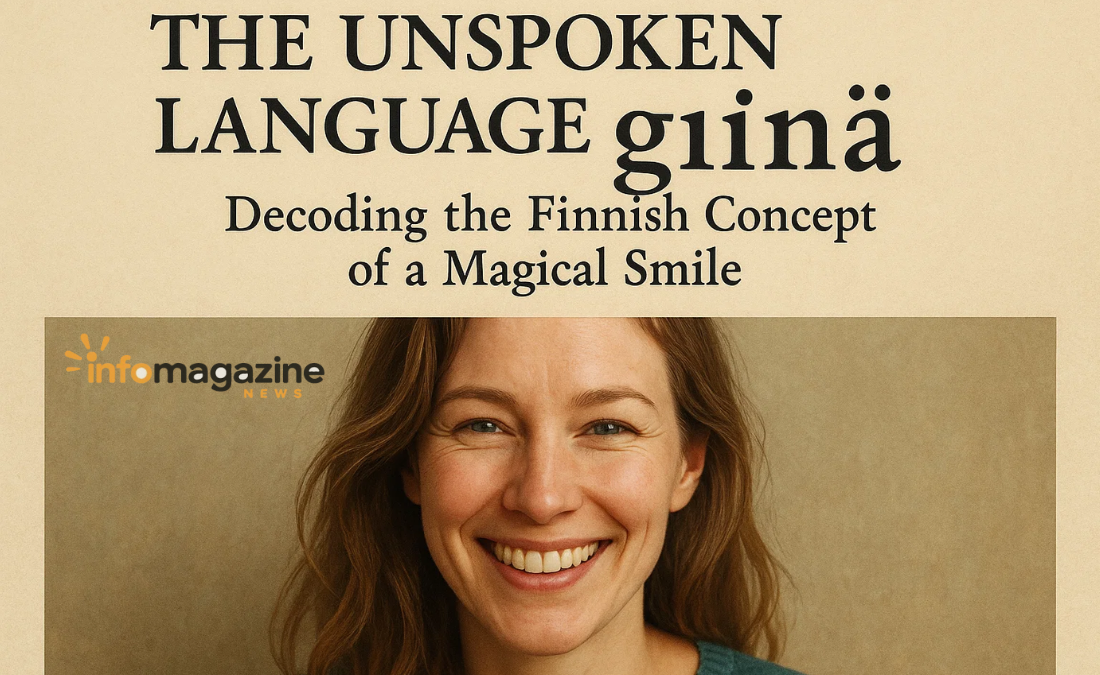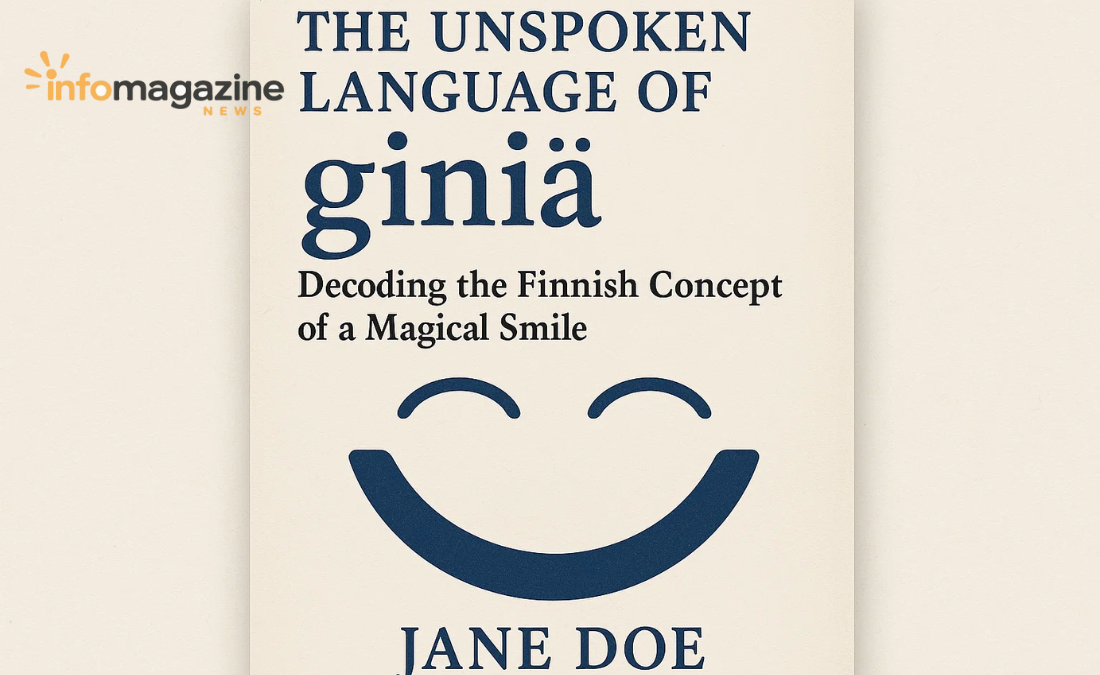In the vast and nuanced lexicon of human emotion, few words capture a feeling as specific and evocative as the Finnish word giniä. It is a term that defies direct translation, a linguistic gem that offers a window into the Finnish soul and a universal human experience. To understand giniä is to understand more than just a smile; it is to comprehend a moment of silent, magical communication, a spark of mischievous joy that passes between individuals. This article will explore the depths of giniä, unraveling its meaning, its cultural significance, and its quiet power in human connection.
What Exactly is giniä? Beyond a Simple Smile
At its most basic level, giniä (pronounced roughly like “gin-ee-ah”) refers to a secret or knowing smile. It is not the broad, open grin of jubilation one might show when receiving good news. It is not the polite, social smile offered to a stranger. Instead, giniä is an intimate, often subtle, facial expression shared between people who are in on a shared joke, a hidden understanding, or a private moment of amusement.
Imagine a scene: two friends are sitting in a meeting where someone is making an outlandish claim. They catch each other’s eye across the table. Without a word, a faint, almost imperceptible smile touches their lips—a smile that says, “I know, you know, and we both know this is absurd.” That is giniä. It is the smile of parents listening to their child tell a fantastically imaginative story. It is the glance between partners at a party that communicates, “I’m having a boring time too, let’s leave soon.” It is a silent pact of shared perception, sealed with a fleeting curve of the mouth.
This makes giniä profoundly different from more general terms for smiling. It is laden with meaning and context. It is an expression that requires a counterpart; a giniä smiled into a mirror loses its essential quality. Its magic lies in its reciprocity.
The Cultural Roots of giniä: A Finnish Perspective
The existence of a specific word for this phenomenon in the Finnish language is deeply telling. Finnish culture is often stereotyped as reserved, quiet, and valuing personal space—a culture of sisu (perseverance) and few words. In such a context, non-verbal communication carries immense weight. When words are sparingly used, a look, a glance, or a subtle smile must do the heavy lifting of building rapport and expressing complex feelings.
Giniä fits perfectly into this framework. It is a tool for connection that bypasses the need for verbose explanation. It allows Finns to communicate warmth, understanding, and camaraderie without breaking cultural norms of quietude. It is the social glue that bonds people together in a culture that might otherwise seem distant to outsiders. This one word encapsulates a whole philosophy of communication: that the deepest understandings are often unspoken and that a shared moment of silent recognition can be more powerful than a thousand words.
The Many Facets of a giniä: Recognizing Its Forms
While the core of giniä remains a knowing smile, it can manifest in various shades and contexts, each adding a layer to its meaning:
- The Mischievous giniä: This is perhaps the most common form. It’s the smile of a child hiding a surprise, the look between friends planning a gentle prank, or the smirk that accompanies a clever but slightly naughty idea. It is playful and brimming with unspoken fun.
- The Empathetic giniä: This version is softer and warmer. It’s the smile a parent gives a child who is trying their best, or the look between two people who have endured a difficult situation together and have come out the other side. It says, “I see you, I understand, and we are in this together.”
- The Intellectual giniä: This is the smile of shared knowledge. It flashes between colleagues who solve a complex problem, between students who grasp a difficult concept at the same time, or between audience members who catch a deeply clever reference in a lecture. It is a meeting of minds, acknowledged silently.
- The Romantic giniä: In the context of romance, giniä becomes a powerful tool of intimacy. It is the private smile lovers share across a crowded room, a silent message that excludes everyone else and reinforces their unique bond. It is a language of its own within a relationship.

The Universal Power of the Unspoken Smile
Though the word itself is Finnish, the experience of giniä is profoundly universal. Every culture and every person has experienced this moment of wordless connection. We may not have a specific term for it, but we recognize its power instantly. It is a fundamental part of human social bonding.
Psychologically, sharing a giniä is a powerful act. It creates an “in-group” of two or more people, fostering a sense of belonging and mutual understanding. It validates our perceptions—that moment of “aha, you see it too!”—which is a deeply satisfying human need. This tiny, non-verbal exchange releases neurotransmitters like dopamine and oxytocin, enhancing feelings of happiness and strengthening social bonds. In a world increasingly dominated by digital and explicit communication, the value of this subtle, analog connection cannot be overstated.
Embracing the Spirit of giniä in Daily Life
You don’t need to be Finnish to cultivate the spirit of giniä. It is a practice of mindful connection. It involves being present enough in a conversation to notice the subtle cues of another person. It’s about having the confidence to share a quiet moment of understanding without needing to verbalize it. It encourages us to look up from our screens and truly see the people we are with, seeking those opportunities for a shared, silent joke or a moment of acknowledged camaraderie.
By embracing the concept of giniä, we can enrich our relationships. It reminds us that communication is not just about what we say, but how we listen, observe, and respond with our entire being. It is a testament to the fact that sometimes the most profound conversations happen in complete silence.
Conclusion
Giniä is far more than just a quirky, untranslatable Finnish word. It is a key to understanding a culture that values depth and subtlety in human interaction. It names a universal human experience—the magical, silent smile of shared understanding—giving form to a feeling we all know but often leave unlabeled. In doing so, giniä teaches us a valuable lesson about connection: that true understanding often resides not in grand declarations, but in the quiet, knowing glances we share with others. It is a reminder to cherish those fleeting, wordless moments where a simple smile, a true giniä, says everything that needs to be said.

